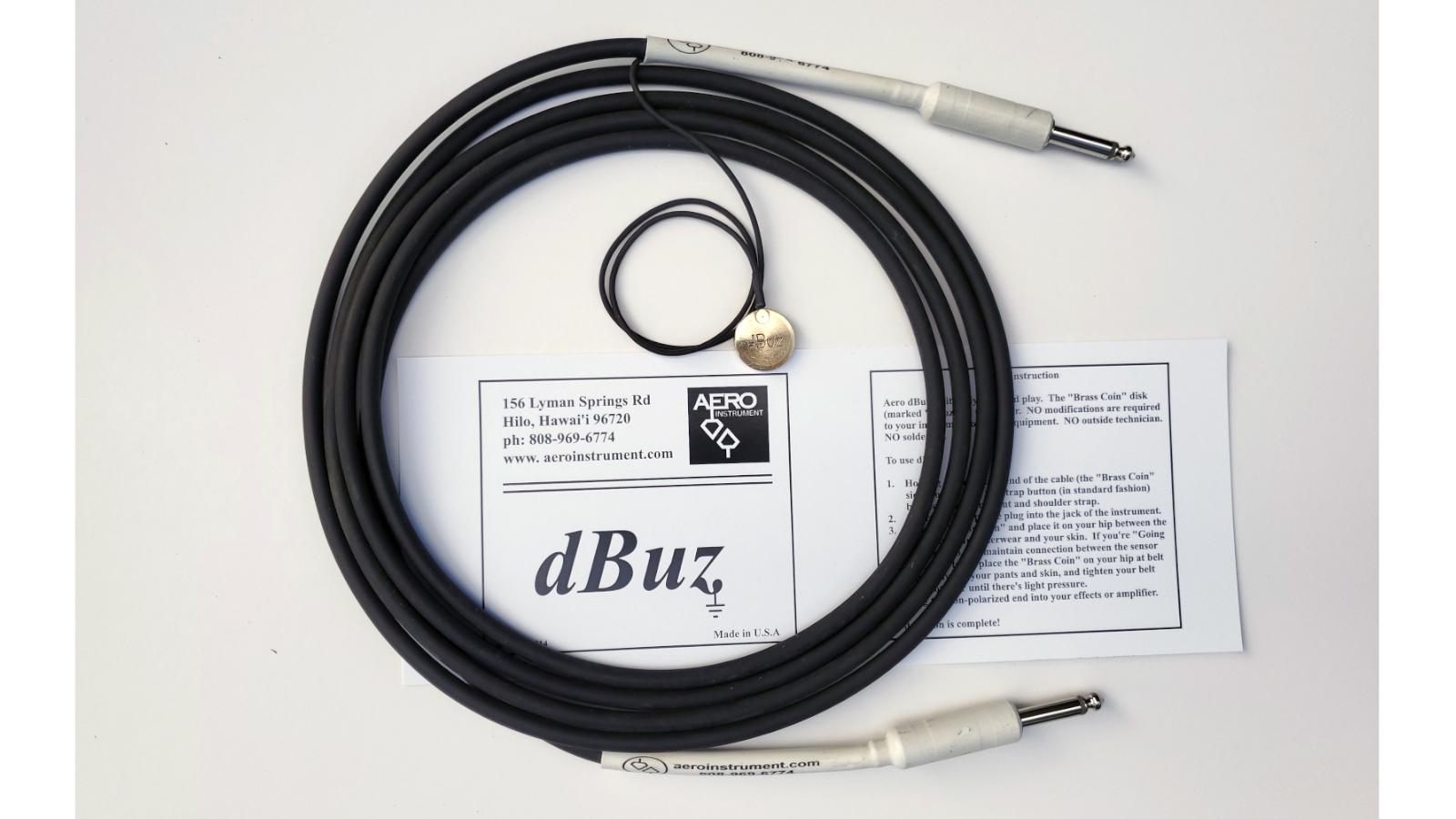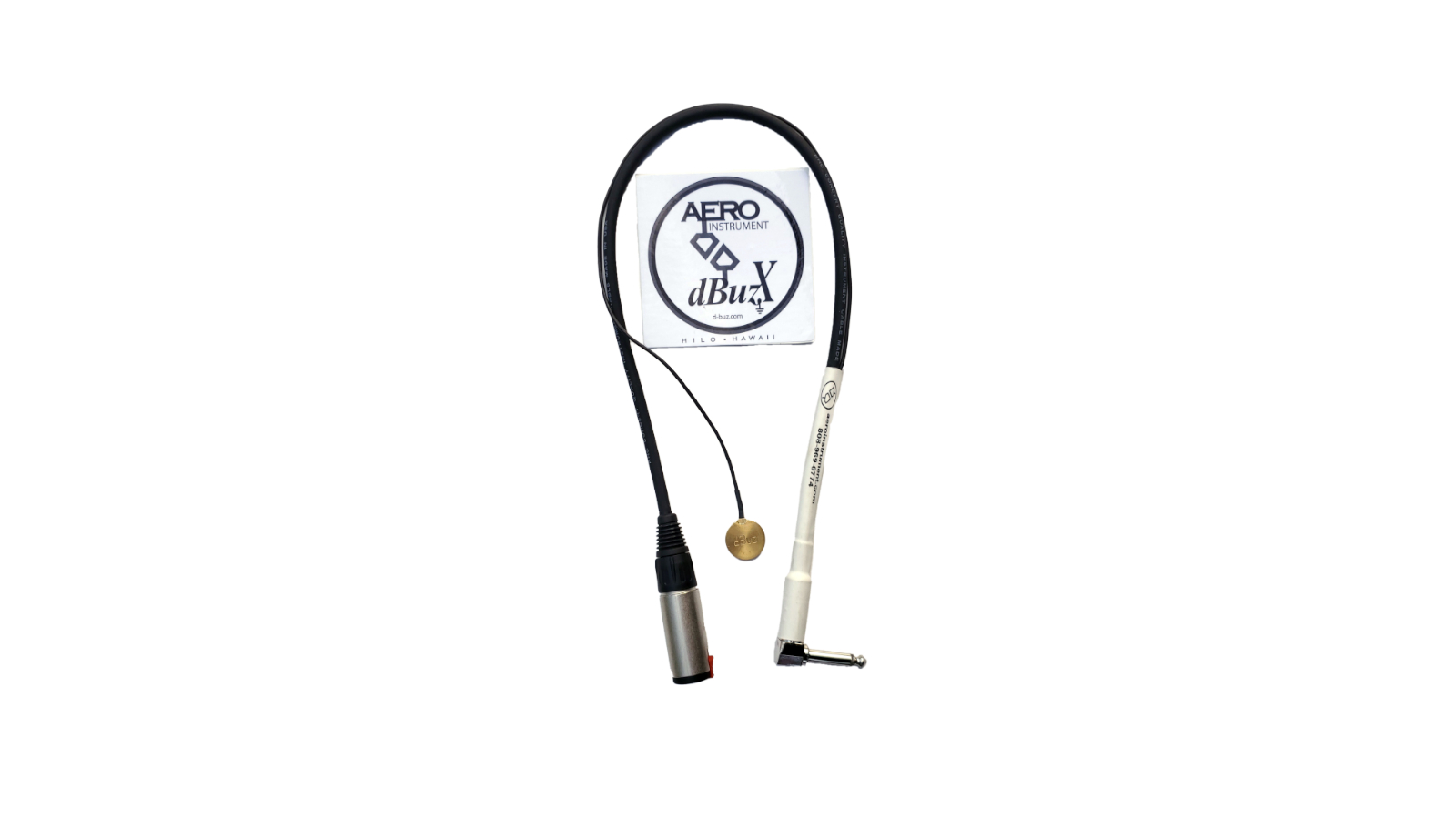GuitarPlayer Verdict
A beautifully thought-out solution to an issue that most guitarists have just gotten used to living with.
Pros
- +
A simple and clever solution to the age-old problem of ground noise
Cons
- -
None, though be aware that the dBuz sensor’s wiring requires careful handling
You can trust Guitar Player.
Ground-noise issues are so commonplace for guitarists that many of us just take them in stride, all while keeping one hand on our strings or bridge to squelch the buzz coming from our amp.
Just think about that as you cast your eyes over Aero Instrument’s dBuz cable and dBuzX extender and ask, “Do I need them?”
If that incessant little albatross to your playing style is starting to get you down, and especially if it’s plaguing your home recording efforts, dBuz can rid you of it as fast as you can swap cables.
The dBuz was invented by Larry J. Pollack of Aero Instrument in Hilo, Hawaii. He’s best known for his high-end replacement pickups for electric guitar and bass, and he’s also made custom amplifiers and other audio gear.
Given his depth of audio engineering experience, the dBuz might be one of the simplest products Pollack has ever created, yet it’s one with potentially universal appeal.
Ground noise varies with the venue in which you’re playing, recording or rehearsing, but whether it’s mild or extreme, it’s almost always there to some degree, preying on humbuckers and single-coils alike.
Pollack points out that, as a ground-noise solution, dBuz does nothing about common noises, including microphonics and those emanating from power supplies. But it does eliminate a whopping 99.9 percent of the irritating buzz that it’s designed to kill, and can also provide shock prevention when used in a certain way (more of which below).
All the latest guitar news, interviews, lessons, reviews, deals and more, direct to your inbox!
As such, it’s great at nullifying buzzes from poorly grounded or ungrounded bridges, poorly conducting aluminum bridges, plastic-coated strings, acoustic instruments, upright basses, many ground-loop issues and so on.

The dBuz Cable is a simple plug-and-play product that includes a standard high-quality guitar cable (available in 10-, 15- and 20-foot lengths) with quarter-inch jack plugs at either end and a dBuz sensor – the small coin-like brass disc – wired to a grounding circuit at the guitar/player end.
It requires no soldering or modification of any kind to use: Just wedge the dBuz disc securely between the skin of your hip and the elastic waistband of your undershorts, and you have a constant, unbroken connection to ground.
The dBuzX is essentially the same thing, but in a 2-foot “pigtail” with locking quarter-inch female jack at the far end, ideal for use with wireless systems or for those who prefer their existing full-length cables.
Each cables provides a big bonus feature, too: While you can leave your guitar’s bridge ground wire connected for normal buzz-elimination use, if you do disconnect that wire, the dBuz system will provide current limiting to protect you from electrical shock when contacting a live mic or other gear.
Suffice to say it works very well. It’s also fairly unobtrusive: Once the brass disc warmed up, we forgot it was there and encountered no issues or oddities of note whatsoever.
It’s a robustly made product – though obviously you’ll want to handle the dBuz sensor and its connecting wire carefully – and all in all it’s a beautifully thought-out solution to an issue that most guitarists have just gotten used to living with since the dawn of the amplified instrument.
Dave Hunter is a writer and consulting editor for Guitar Player magazine. His prolific output as author includes Fender 75 Years, The Guitar Amp Handbook, The British Amp Invasion, Ultimate Star Guitars, Guitar Effects Pedals, The Guitar Pickup Handbook, The Fender Telecaster and several other titles. Hunter is a former editor of The Guitar Magazine (UK), and a contributor to Vintage Guitar, Premier Guitar, The Connoisseur and other publications. A contributing essayist to the United States Library of Congress National Recording Preservation Board’s Permanent Archive, he lives in Kittery, ME, with his wife and their two children and fronts the bands A Different Engine and The Stereo Field.


